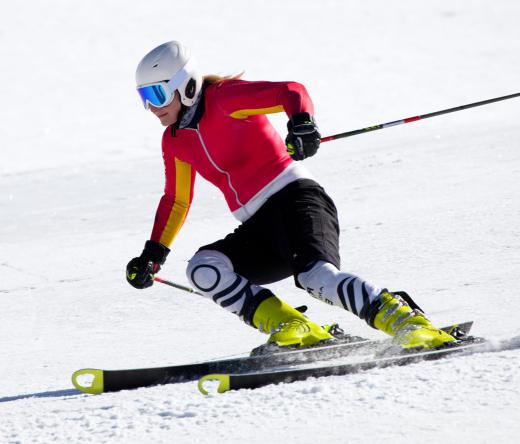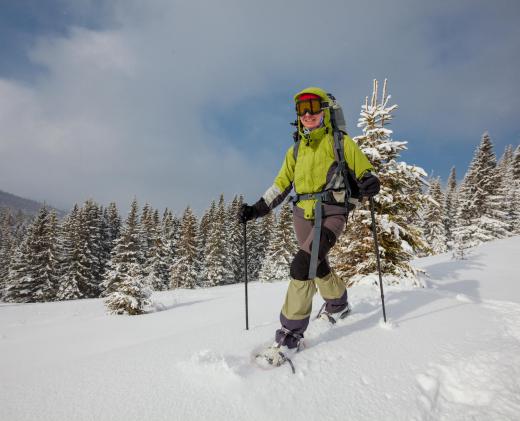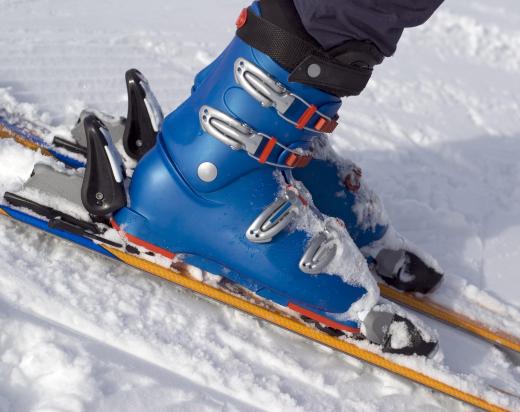Snowboarding and skiing are sports that take place on snow and are especially popular in northern climates. People of all ages, skill levels and physical fitness can participate in both sports, especially if they have taken lessons. The primary differences between them are the equipment involved and the techniques used. A snowboarder stands sideways on a single, wide board, and a skier faces forward on one or two narrow skis. A skier also typically uses ski poles to help him balance, turn and propel himself, but a snowboarder does not.
Equipment

The sport of snowboarding emerged in the 1970s, many centuries after skiing became popular. Snowboarding uses a solid board similar to a surfboard or large skateboard. A snowboarder wears boots that can be attached to the board with special equipment called bindings. The bindings are situated so that, when the user's boots are attached, the toes are facing one side of the board. Whether they face the left side or the right side depends on how the bindings are installed, which is based on the snowboarder's preference for which foot is forward.

Skiing typically involves the use of two skis, one for each foot, with the user's boots facing forward and being attached using bindings. A variation of the sport, called monoskiing, involves the use of one wide ski to which both boots are attached facing forward. People who have some type of physical disability in their legs can use monoskis that have raised seats attached attached to them. A ski pole has a grip on one end, along with a strap that goes around the user's hand or wrist, and it has a pointed tip at the other end.
Terrain

The terrain for skiing varies much more than the terrain for snowboarding does. Both sports can be done on mountain slopes, hillsides or man-made areas that slope downward, although there might be some short areas that are somewhat level or slightly uphill. Skiing, however, can be done on flat ground or even uphill slopes, because the skier can use the poles to push off the ground and propel himself. Cross-country skiing is a variation in which the skier must propel himself across this type of terrain most of the time and can coast downhill only some of the time.

Using ski poles and two separate skis typically gives skiers more control than snowboarders have. For example, a skier usually can turn more quickly. This often means that skiers can travel in more heavily wooded or rocky areas that would be too dangerous for most snowboarders.
Techniques and Skill
Both of these sports can be difficult to learn, and injuries are common for beginners. Experts say that anyone who wants to learn how to ski or snowboard should take lessons from a qualified instructor and should begin on relatively easy terrain, such as small hills that have gradual slopes. Many people believe that snowboarding is more difficult to learn, because balancing on a single board is more of a challenge, and the user cannot use poles for balance. Even experienced skiers might need lessons to learn how to snowboard safely. Skiing, however, can involve much higher rates of speed when the slope is steep enough and the skier is highly skilled.
